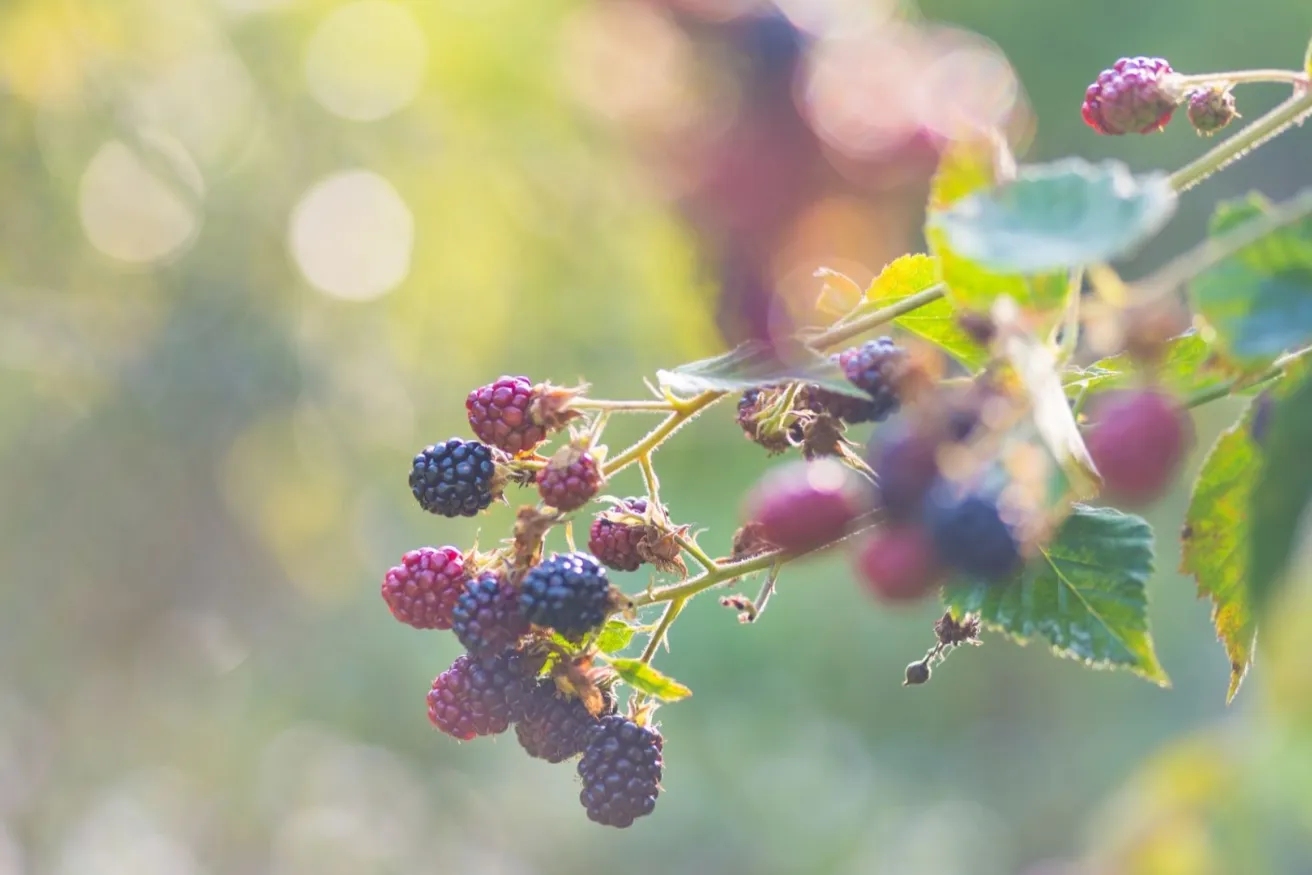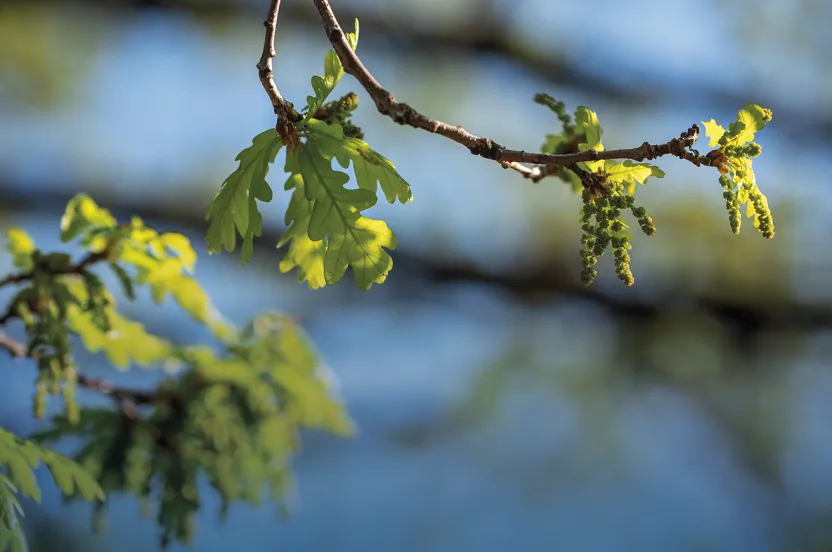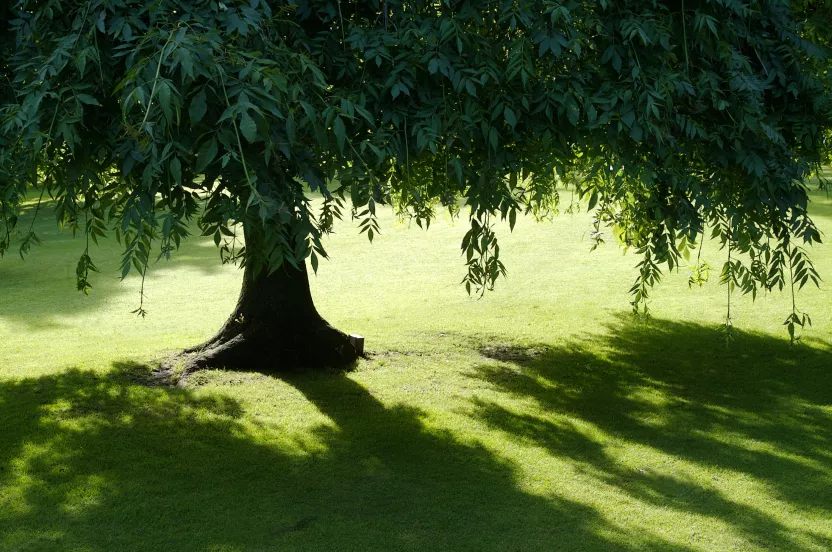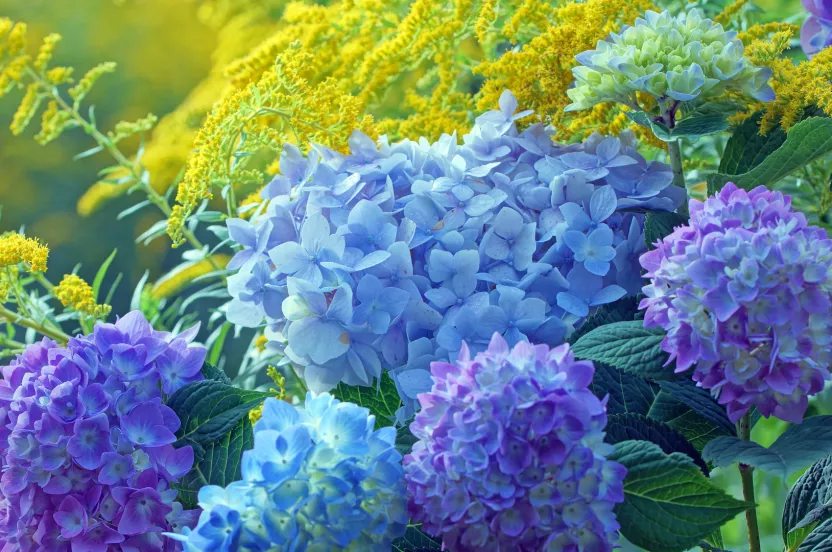Now live: The 2025 Canopy Report. Learn how Americans see trees. GET THE REPORT
How to Plant, Care, and Prune Arapaho Blackberry Bushes
Blackberries are often considered one of the easiest fruits to grow at home. They are a native species to the United States and grow as a small shrub or trailing vine. The fruit from this plant can be used for table fruit, syrup, jams, and jelly. Proper care starts when you select a proper plant, and what you do in its first few years of life will affect its shape, strength, and even its life span.
This guide will take you step by step, from selecting and planting the right fruit trees, bushes, and vines for your backyard garden or orchard, all the way to upkeep of your mature tree.
Choosing a Site
Light: Full Sun
Soil: Prefer acidic to slightly basic (6.0-7.0), well-drained, organic soil. However, they adapt to most soil types except alkaline and wet. If you have clay soil, you will need to amend with organic matter. To increase the soil's organic content, amend with organic mulch-wet peat moss, well-aged sawdust, straw or leaf litter.
Pollination: Blackberries are self pollinating.
Hardiness Zone: 4-9
Minimum Chill Hours Needed: 400-500
Where to Plant: Blackberries tend to form thickets and are vigorously rooted. Locate the plants where you can control "volunteers. " Blackberries have long roots and send up suckers many feet from the parent plant. Leave room to mow around the beds.
Do Not Plant: In established garden areas where you have previously planted vegetables or fruit plants. Plant blackberries 300 feet away from raspberries.
Trellis Support Not Needed: 'Arapaho' blackberries do not need a trellis for support. However, they can be trained to a trellis no higher than 6'-8'.
How to Plant Blackberry Bushes
For best results, plant your blackberry bushes in early spring. Once your plants arrive, plant them immediately. If you cannot plant immediately, keep new arrivals cool and roots moist. To keep cool, it is recommended that you store in refrigerator or cool place.
- Unpack and Soak: Unpack blackberry and soak in water for 3 to 6 hours just before planting.
- Cut Broken Roots.
- Cover Roots: Cover roots from sunlight when planting. Blackberries have a high mortality rate when roots are exposed to sunlight while planting.
- Dig Hole(s): The width of the hole should allow you to spread roots. If you are planting multiple blackberries dig holes 2'-4' apart. If you are creating several rows, dig holes 6'12' apart.
- Spread Roots in Hole.
- Shovel Dirt Back in Hole and Add Amend Soil.
- Water: Give each plant 1"-2" of water. The plants are rather shallow rooted, so moisture needs to be at the surface. Do not let soil become dry to a depth of 6".
- Add Fertilizer: A weak liquid nitrogen fertilizer may be applied at planting. Keep fertilizer 3"-4" away from the base of the plant to avoid burning the roots.
- Mulch: Mulch the first year to keep the weeds down and increase the crop yield, but do not mulch after that unless the soil is very sandy.
How to Prune Blackberries
First Year Pruning: First year erect canes should be left unpruned.
Annual Pruning after First Year: Hand-held clippers are necessary when pruning. First year erect canes should be left unpruned. Second year canes should be pruned back to 40"-48". Pruning encourages lateral branching and increases cane strength, so they don't fall over in snow and wind. Pruning should be done early in the growing season to decrease wounds that cause cane blight. Lateral branches should be cut back to 12"-18".
During the second year, remove damaged, weak and rubbing canes. You should thin out healthy canes closer than 6" apart. Any pruned or removed canes should be disposed to eliminate the spread of disease and insects.





